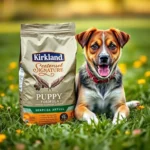
Proper nutrition is essential for maintaining a dog’s health and overall well-being. The debate surrounding cat food vs dog food is prevalent among pet owners, as many wonder if it’s safe or appropriate to feed their dogs cat food. Understanding the specific nutritional needs of dogs is crucial for ensuring they receive the right balance of nutrients for their unique physiology.
Understanding Dog Nutrition
Basic Nutritional Requirements
Dogs have specific nutritional requirements that differ from other pets, including cats. The essential nutrients dogs need include:
- Proteins: Vital for growth, repair, and maintenance of body tissues.
- Fats: Provide energy and support healthy skin and coat.
- Carbohydrates: Serve as a source of energy and aid in digestion.
- Vitamins: Support various bodily functions and overall health.
- Minerals: Essential for bone health, nerve function, and metabolic processes.
Balanced nutrition is crucial for a dog’s health, as it affects everything from energy levels to immune function.
Differences in Nutritional Needs Between Species
Dogs and cats have evolved differently, leading to distinct nutritional needs. While dogs are omnivores and can thrive on a variety of foods, cats are obligate carnivores, requiring higher protein content and specific nutrients found primarily in animal tissues. This fundamental difference highlights why dogs cannot thrive on cat food.
Cat food is formulated to meet the requirements of cats, which include higher levels of protein and fat. Understanding these differences is essential for dog owners to avoid nutritional deficiencies or health issues.
The Role of Protein in Dog Diets
Importance of Protein
Protein is a crucial component of a dog’s diet, playing a significant role in various bodily functions. It supports growth, muscle repair, and the maintenance of healthy skin and coat. Dogs derive protein from various sources, including:
- Animal-based proteins: Such as chicken, beef, fish, and lamb, which are highly digestible and provide essential amino acids.
- Plant-based proteins: Such as peas, lentils, and soy, which can supplement a dog’s protein intake but may not offer a complete amino acid profile.
Quality protein sources are vital for ensuring dogs receive the necessary nutrients for optimal health.
Protein Requirements Based on Life Stages
The protein requirements of dogs vary based on their life stage. Here’s a breakdown:
- Puppies: Require higher protein levels (around 22-32% of their diet) to support rapid growth and development.
- Adult dogs: Need a moderate protein intake (18-25%) to maintain muscle mass and overall health.
- Senior dogs: May benefit from slightly higher protein levels (20-30%) to help prevent muscle loss associated with aging.
Adjusting protein intake according to life stage is essential for meeting a dog’s unique nutritional needs.
Fats and Carbohydrates: What Dogs Need
Essential Fatty Acids
Fats are another critical component of a dog’s diet. They provide a concentrated source of energy and are necessary for the absorption of fat-soluble vitamins (A, D, E, and K). Essential fatty acids, particularly Omega-3 and Omega-6, play a vital role in maintaining skin health, reducing inflammation, and supporting overall wellness.
Sources of healthy fats include:
- Fish oil
- Flaxseed oil
- Chicken fat
Incorporating the right types of fats in a dog’s diet can significantly enhance their health and vitality.
Carbohydrate Sources
Carbohydrates provide a source of energy and help with digestive health. While dogs can utilize carbohydrates, they do not require them as a primary nutrient. Recommended carbohydrate sources for dogs include:
- Whole grains: Such as brown rice and oats.
- Vegetables: Such as sweet potatoes, peas, and carrots.
These sources not only provide energy but also contribute vitamins, minerals, and fiber, which supports healthy digestion.
Vitamins and Minerals: Micronutrients for Optimal Health
Essential Vitamins for Dogs
Vitamins are crucial for various bodily functions, including immune support, energy metabolism, and blood health. Key vitamins for dogs include:
- Vitamin A: Important for vision and immune function.
- Vitamin D: Supports calcium absorption and bone health.
- Vitamin E: Acts as an antioxidant and supports skin health.
- B-complex vitamins: Involved in energy metabolism and red blood cell production.
Signs of vitamin deficiencies can include poor coat quality, skin issues, and lethargy, highlighting the importance of balanced nutrition.
Key Minerals Necessary for Dogs
Minerals play a vital role in numerous bodily functions, including bone formation, muscle contractions, and nerve function. Essential minerals for dogs include:
- Calcium: Crucial for bone health and teeth.
- Phosphorus: Works alongside calcium for bone strength.
- Potassium: Important for muscle contractions and nerve function.
Both deficiencies and excesses of these minerals can lead to health issues, making it essential to provide a balanced diet.
Comparing Dog Food and Cat Food
Formulation Differences
When examining cat food vs dog food, the formulation differences are significant. Cat food typically contains higher protein and fat levels, catering to the dietary needs of cats. In contrast, dog food is formulated to provide a balanced diet suitable for an omnivorous lifestyle, including a mix of proteins, fats, carbohydrates, vitamins, and minerals.
Risks of Feeding Dogs Cat Food
Feeding dogs cat food over an extended period can lead to several health risks, including:
- Obesity: Due to higher fat content, dogs may gain weight rapidly.
- Pancreatitis: High-fat diets can trigger inflammation in the pancreas.
- Nutritional deficiencies: Dogs may lack essential nutrients they cannot obtain from cat food.
Common misconceptions exist around dogs eating cat food, but it’s important to understand the potential health consequences.
When Cat Food Might Be Appropriate
In rare situations, cat food might be temporarily acceptable for dogs, such as during emergencies when dog food is unavailable. However, this should only be a short-term solution. Transitioning back to dog food is critical to ensure dogs receive the proper nutrition they need for long-term health.
Choosing the Right Dog Food
Types of Dog Food Available
When it comes to dog food, pet owners have various options to choose from, including:
- Dry kibble: Convenient and cost-effective, providing balanced nutrition.
- Wet food: Higher moisture content, often more palatable.
- Raw diets: Featuring uncooked meats and vegetables, appealing to natural feeding instincts.
- Homemade meals: Allowing for control over ingredients but requiring careful planning to ensure balanced nutrition.
Each type has its benefits and drawbacks, making it essential for owners to choose the right option for their pets.
Reading Dog Food Labels
Understanding how to read dog food labels is crucial for pet owners. Key aspects to look for include:
- Ingredient list: Ingredients are listed in order of quantity, so the first few should be high-quality protein sources.
- Guaranteed analysis: This section includes information on protein, fat, fiber, and moisture content, providing insight into the food’s nutritional value.
Choosing high-quality dog food involves understanding these labels to ensure the selected food meets a dog’s nutritional needs.
Special Dietary Needs
Some dogs may have allergies, sensitivities, or specific dietary needs that require special consideration. Common issues include:
- Food allergies: Signs may include skin irritations or gastrointestinal upset.
- Sensitive stomachs: Some dogs may require easily digestible food.
- Weight management: Obese dogs may benefit from weight control formulas.
Selecting food based on a dog’s specific health needs is crucial for maintaining their overall well-being.
Common Myths About Dog Nutrition
Debunking Popular Misconceptions
There are several myths surrounding dog nutrition that can potentially mislead pet owners, such as:
- “Dogs can eat anything”: While dogs are adaptable, certain human foods can be toxic.
- “Grain-free is always better”: Not all dogs require a grain-free diet, and grains can be a healthy source of carbohydrates for many dogs.
Understanding these misconceptions can help pet owners make informed decisions regarding their dog’s diet.
Importance of Veterinary Guidance
Consulting with a veterinarian for personalized nutrition plans is crucial for dog owners. Regular health check-ups allow for monitoring dietary effects and making necessary adjustments to ensure a dog’s nutritional needs are met.
Conclusion
Understanding the differences between cat food vs dog food is vital for ensuring that dogs receive the appropriate nutrition necessary for their health and well-being. By recognizing the unique nutritional requirements of dogs and making informed food choices, pet owners can significantly enhance their dog’s quality of life. Prioritizing proper nutrition, alongside veterinary guidance, ensures that dogs can thrive and lead happy, healthy lives.









